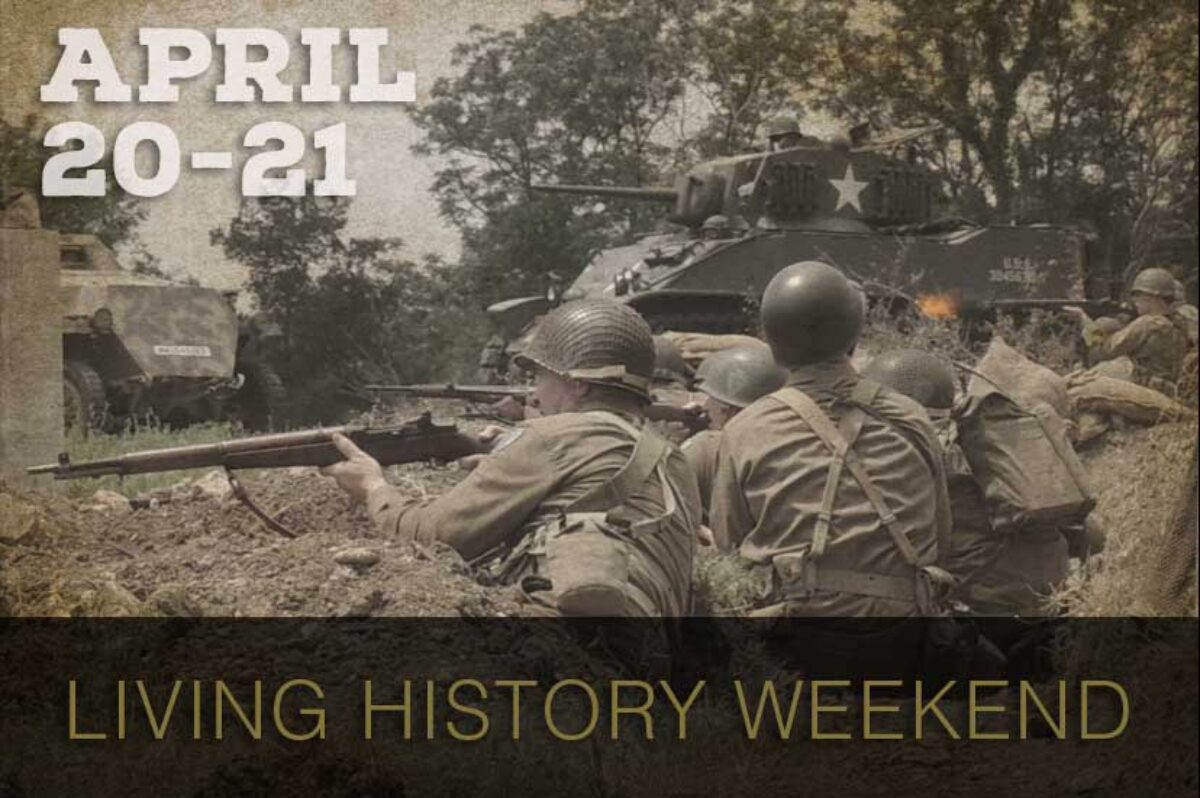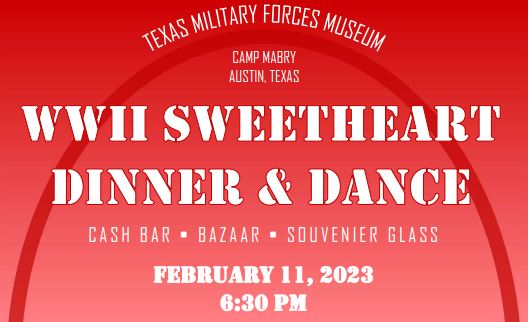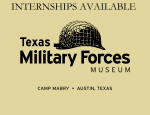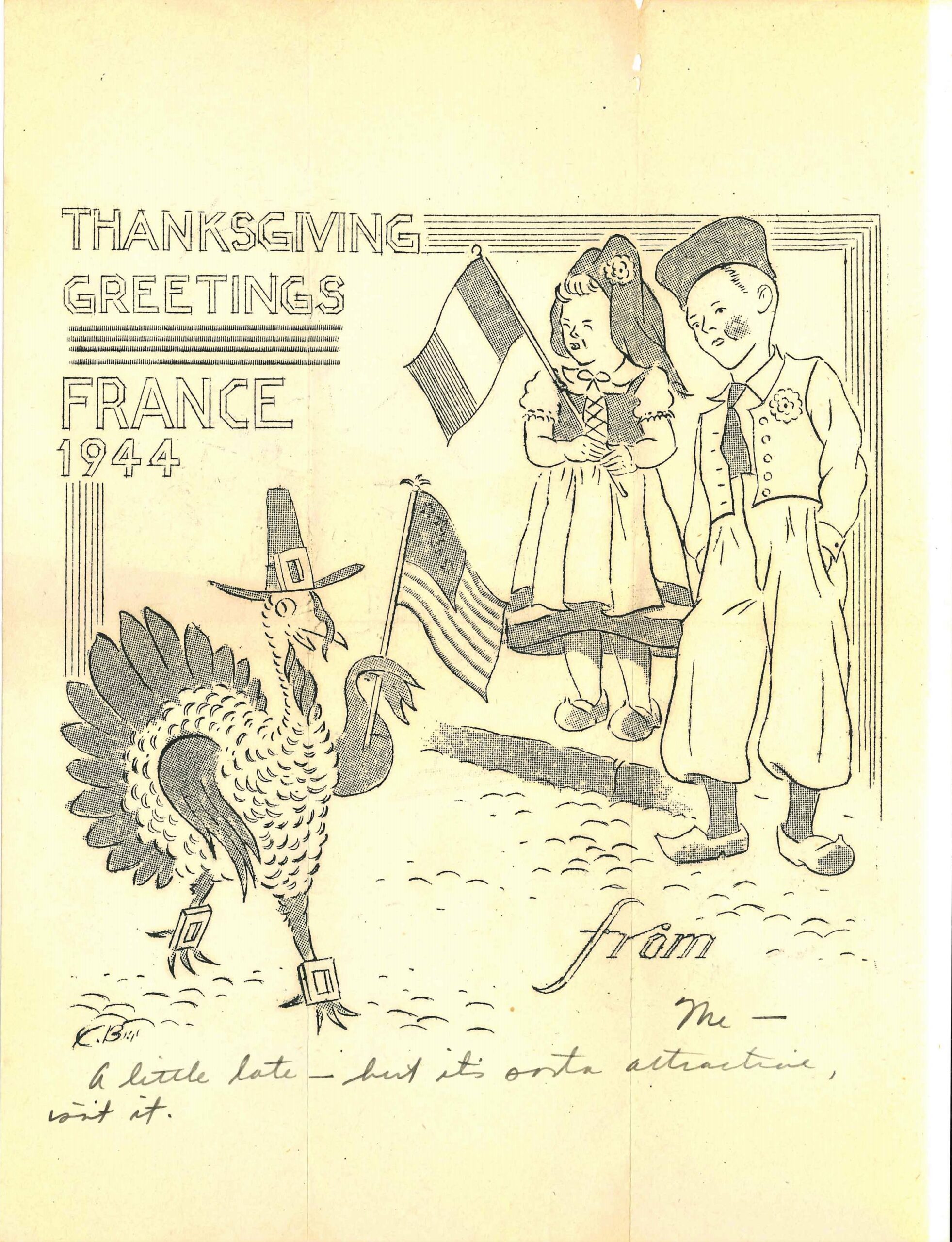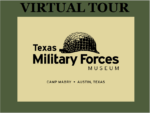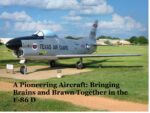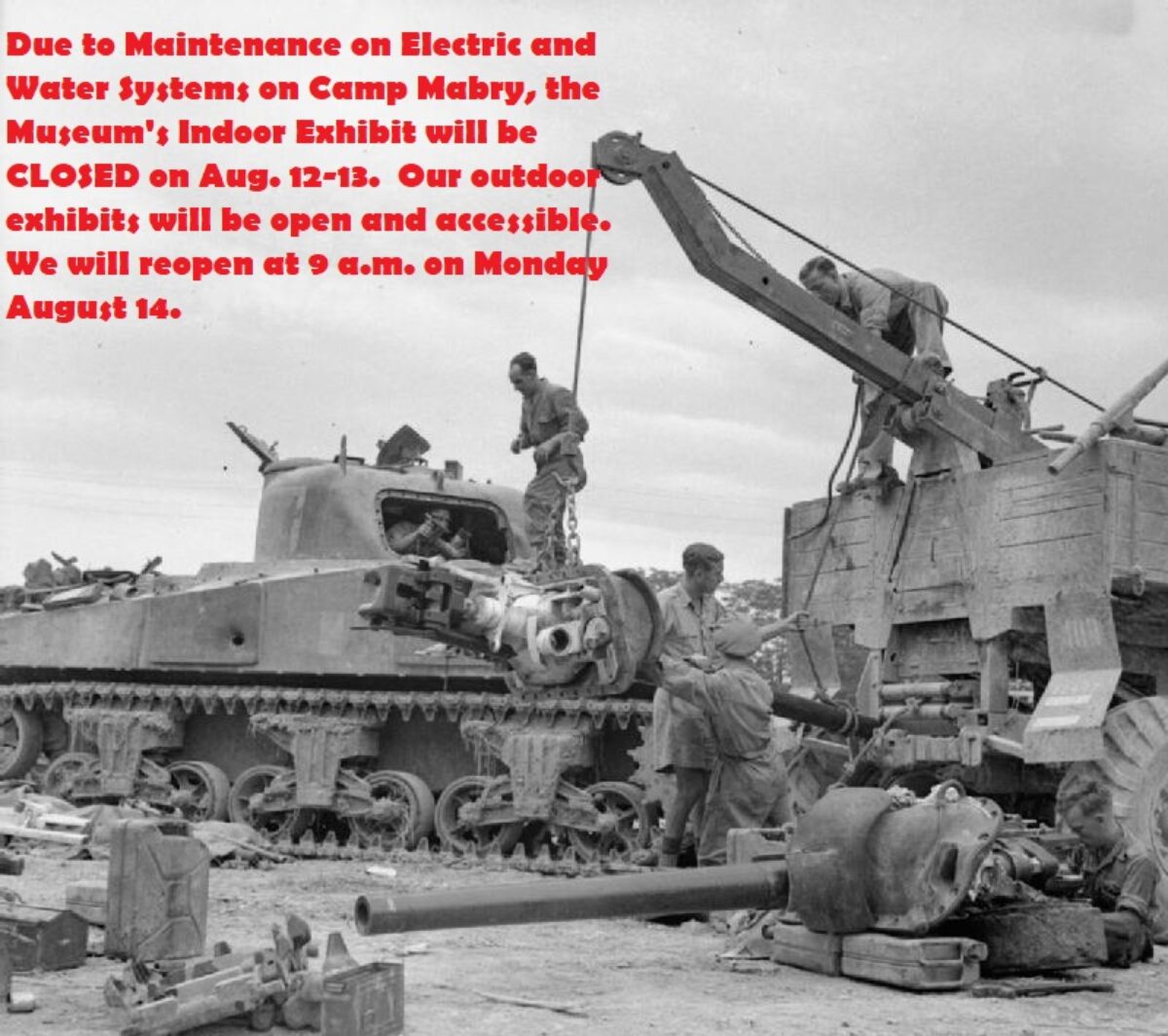 We apoligize for any inconvenience and hope you will visit us soon.
We apoligize for any inconvenience and hope you will visit us soon.
Category: Uncategorized
Liviing History Weekend and WWII Battle Reenactment
Camp Mabry Living History Weekend
Hosted by the Texas Military Forces Museum
(3038 W 35th St, Austin, Tx 78703)
April 15-16
9 a.m. to 4 p.m.
Take a stroll through Texas Military History at Camp Mabry’s Living History Weekend on Saturday April 15 and Sunday April 16. This free event, hosted by the Texas Military Forces Museum, will allow visitors to see uniforms, equipment, weapons, tents, communications gear, military vehicles and more dating from the earliest days of the Texas Militia and the Texas Revolution through the end of the Cold War. Find out what was life for soldiers during the Texas Revolution, the Mexican War, Civil War and Spanish-American War. Learn about the role of the Texas Rangers as a 19th Century military force defending Texas’ borders. Explore the realities of camp and battlefield for troops in World War I as well as American, German, British and Russian soldiers in World War II, as well as the Vietnam War. Stand alongside dozens of historic military vehicles including jeeps, tanks, halftracks, trucks and weapons carriers. Watch displays of 19th Century weapons and absorb the sound and fury of a full-scale World War II battle reenactment complete with artillery, tanks, machines guns and over 100 reenactors. Tour the 26,000 square-foot Texas Military Forces Museum and its impressive display of artifacts, tanks, helicopters, jets, weapons, uniforms and more. An ideal educational and commemorative experience for the whole family!
The event will take place rain or shine. 19th Century Weapons Demonstration at 11:30 a.m. each day. World War II Battle Reenactment at 1:00 p.m. each day. Bleacher seating, souvenirs and snacks available. Free admission and free parking. Adults must show a valid photo ID to enter Camp Mabry. For more information visit www.texasmilitaryforcesmuseum.org or call 512-782-5659
WWII “Victory” Dinner Dance Gala
It is time again for the annual Texas Military Forces Historical Foundation WWII themed Sweetheart Dinner Dance. The event will take place at the museum on February 11, 2023 starting at 6:30 pm. As always we will feature the talented Sentimental Journey Orchestra under the direction of Ted Connerly and featuring the Memphis Belles singers. Dinner will be provided by Austin Catering, and a photo booth and souvenir glass will add to the vintage atmosphere. This year instead of the traditional silent auction we will have a bazaar which will allow you to take your purchases immediately.
Tickets are $100 and can be purchased at the event page , by phone or at the museum. Seating is limited.
We look forward to having you join us for this wonderful unique event hosted by the Texas Military Forces Historical Foundation which supports the Texas Military Forces Museum.
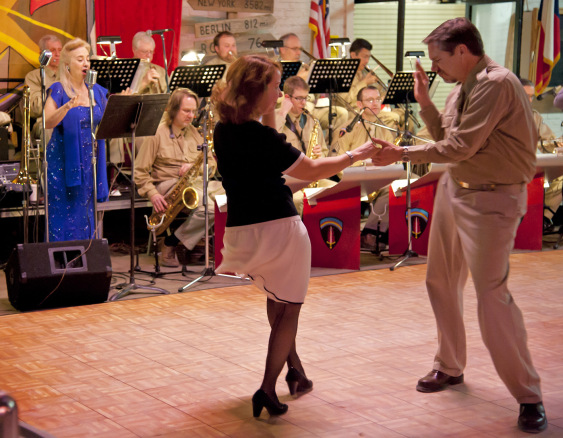
Internship Program- Spring 2023
Camp Mabry, 2200 W 35th St. Austin, Tx
Short Description
The Texas Military Forces Museum intern will be intimately involved in learning the operations of a large museum with a small staff. The intern will engage in all aspects of museum work including cataloging, collections management, exhibit design and construction, special and educational events, fulfilling research requests, giving guided tours, administrative duties to include non-profit retail management, and operational management of the museum. The intern will become well-versed in use of the Past Perfect curatorial database program used by all military and Federal museums. At the end of the internship the successful candidate will be well-grounded in the curatorial, exhibit, operational and education components of museum operation. The museum is open to additional requirements that may be required by faculty for intern to receive course credit.
Requirements
The applicant should be pursuing a career in the museum, history, education or military fields. A specialization, knowledge or interest in United States military history is preferred but not required. Applicant should feel comfortable interacting with the public and providing tours for secondary age school children. Applicant must feel comfortable working for the United States Armed Forces and around military personal and should comport themselves accordingly.
Minimum Work Requirement
15 hours per week, to include two to four Saturdays from 9:30 a.m. until 4:30 p.m. each month. Weekday schedule may involve full days or half days.
Stipend
The Texas Military Forces Historical Foundation will pay a stipend of $435 to the selected candidate at the end of each month of completed work.
Working environment
The Texas Military Forces Museum is located on Camp Mabry at the intersection of 35th St. and MoPac. There is no bus access to the museum and private transportation will be required. Intern must have a valid photo ID, such as a driver’s license to enter Camp Mabry. The museum has wifi internet access and interns are allowed to bring a laptop to work.
Apply
Send a copy of your resume and letter of interest to [email protected] Call 512-782-5394 with any questions. Deadline is January 9, 2023 with a start date January 17, 2023 and an end date of May 15, 2023.
Thanksgiving Hours
Roswell K. Doughty WWII Memoirs
Major Doughty served with the 36th Infantry Division from 1942 through 1945. His memoirs provide an unique perspective into the command structure of the 36th Infantry Division and the lives of its soldiers. This document was made available by the generosity of his granddaughter and the Doughty family.
Welcome Reader
Welcome, we are pleased you are reading this great historical perspective of Roswell K
Doughty. His unique perspective brings a myopic view of life as an intelligence officer on
the front lines in WW2. Enjoy as you will. I have included a link to the hardcover and Kindle
version of the book for those who wish a more permanent copy.
Laura Landsiedel Ford, granddaughter (my mother was Martha Doughty).
https://www.amazon.com/Invading-Hitlers-Europe-Salerno-Intelligence-ebook/dp/B08VNH8R1Q/ref=tmm_kin_swatch_0?_encoding=UTF8&qid=1622652290&sr=8-1
VIRTUAL TOURS
The museum has begun to add virtual tours to our website. Visit the page here:
A Cobra in Texas: Fangs from Above
By Chris Paulos, museum volunteer

In Austin, Texas, a fearsome snake waits for you to walk within striking distance. It’s not a common Texas rattlesnake. This snake is an AH-1S Cobra helicopter gunship, and it waits for visitors to come face to face on a visit to the Texas Military Forces Museum at Camp Mabry in Austin.
The story of the revolutionary Cobra helicopter gunship is one of rapid innovation fueled by the dramatic needs of US military forces on the battlefield.
In the years following the Second World War, little thought was given to the idea of the helicopter as an offensive weapon. The Korean War (1950-1953) saw early helicopters used in the roles of medical evacuation and search-and-rescue. At the same time, the newly established Air Force jealously guarded its role as the primary aviation service. The Air Force focused squarely on the nuclear strike mission rather than the support of ground forces.
One of the earliest advocates for the offensive use of helicopters was Major General James Gavin, commander of the 82nd Airborne Division during World War II. His 1954 article “Cavalry, and I Don’t Mean Horses” sharply criticized the poor mobility of U.S. cavalry during the Korean War. Gavin blamed the increasing preeminence of heavily armored vehicles and the resulting dependence on roads for the failure to effectively delay the initial North Korean advance while the U.S. Army built up its forces as well as the failure to detect the Chinese attack in the fall of that year.
In 1955, Brigadier General Carl I. Hutton, then Commandant of the U.S. Army Aviation School, proposed a new type of combat organization centered on aircraft. Different aircraft would be developed to fill the roles of reconnaissance, strike, and air transport. Early experiments with armed helicopters were carried out by the aviation school through 1957.
The year 1962 was pivotal in the development of the helicopter gunship. That year the Bell Company, in Fort Worth, Texas unveiled a mockup of a proof-of-concept gunship helicopter. The D225 Iroquois Warrior used the engine and other mechanical components from the UH-1C. This model established the familiar layout of the gunship with pilot and copilot/gunner in tandem seats, a nose turret, and stub wings to carry rockets. The Army was impressed enough to request a second, flying demonstrator that flew the following year, named the Bell 207.
Also in 1962, the Army’s Howze Board recommended the creation of five “Air Assault” divisions, each with enough helicopters to carry a third of third of its infantrymen at one time. There would also be thirty-six helicopters armed with rockets. The 1st Cavalry Division (Airmobile) was organized and sent to Vietnam in 1965.
The Army’s long-term hopes were on the Lockheed AH-56 Cheyenne, the first prototype of which flew in September 1967. Unfortunately, the Cheyenne was not expected to be available until 1970, and the Army needed a dedicated gunship immediately.
Mark Folse, an engineer at Bell, found the solution. In order to introduce a new helicopter into the Army fleet there had to be a formal competition between manufacturers after a lengthy design process. Adding a new variant of an existing helicopter took less time and a lot less paperwork.
Bell already had a helicopter on hand to start with: the UH-1 Iroquois, more commonly known as the Huey. Folse’s team took the Lycoming T53 engine, transmission, tail rotor, and a host of other parts from the Huey and mated them to a new sleek fuselage. The resulting Model 209 aircraft took to the air in September 1965. In only two years time the production model was flying over battlefields in Vietnam.
The AH-1G Cobra saw its first combat action on September 4, 1967 – as part of a familiarization flight for General George Seneff, Commanding General of the 1st Aviation Brigade. What had been intended as a routine, non-combat flight turned into a baptism of fire when Seneff and Chief Warrant Officer John Thomson encountered a suspected Viet Cong sampan on the Mekong River. The sampan was sunk with rockets and machine gun fire. Regular operations began in October conducted by the 334th Assault Helicopter Company.
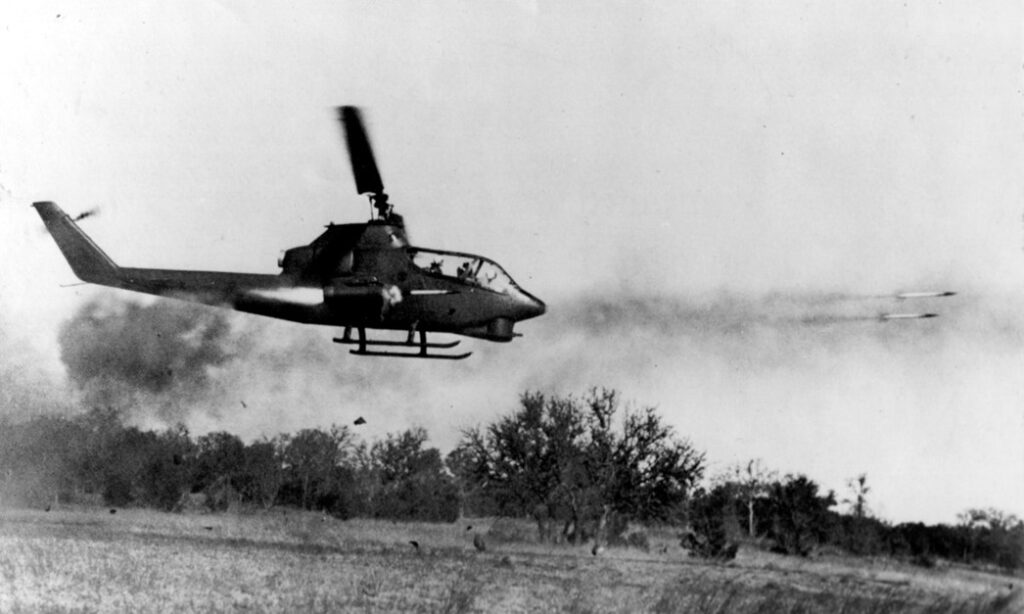
Attack helicopters changed the battlefield narrative for soldiers fighting on the ground. Soldiers now had air support which belonged to them the same way as artillery did. Calling in Air Force fighter-bombers required a lengthy process in which the request had to be moved through liaison officers to the other branch then moved up its chain of command for approval. However, the Cobra gunships could directly support ground units. If mortars were the infantryman’s “pocket artillery,” then the Cobra was his pocket air force.
An attack helicopter’s low speed, though a vulnerability, is also one of its greatest assets. A jet fighter would approach the battlefield at hundreds of miles per hour. Give the pilot a target at a distance of 10 miles and he has less than ninety seconds to confirm the target’s identity, maneuver into position for the attack, and make any other final adjustments to onboard systems. By way of contrast, the helicopter’s ability to fly at low speeds and hover allows it to loiter around an engagement area and observe the battle over time.
The technology, cutting edge at the time, was formidable, but the Cobra was designed to work with other units in tandem. Teamwork was required, and the Army was ready to use the Cobra in partnership with other assets to change the battlefield balance of power.

In Vietnam, each air cavalry troop was divided into three platoons which complemented one another’s capabilities. The Aero Scout Platoon flew scout helicopters, first the OH-23, later the OH-6. This platoon was the primary reconnaissance element. The Aero Rifle Platoon provided a ground combat capability with transport helicopters and four infantry squads. Supporting both was the Aero Weapons Platoon with gunship helicopters, first armed Hueys, then Cobras.
The scouts and gunships normally worked as mixed pairs. The scout helicopter would take the lead to attract enemy fire. The Cobra would then dish out its venom against the enemy targets.
Two hundred seventy-nine Cobras were lost on the battlefields of Vietnam. The worst years were 1969 and 1970, which together saw over half of the total loss. On the battlefield, the young Cobra helicopter pilots often faced anti-aircraft guns, machine guns, and small arms. Even a rifle round could cause serious damage if it hit any of the exposed moving parts which made up the rotor assembly. Towards the end of the war a new threat emerged, that of the man-portable surface-to-air missile.
“We had no defense against SA-7s,” Cobra pilot Carl “Skip” Bell recalled in a 2017 interview. “The only thing we could do is fly…hugging the ground, if we knew an area had SA-7s.” Later models of the Cobra would be equipped with countermeasures against infrared homing missiles.
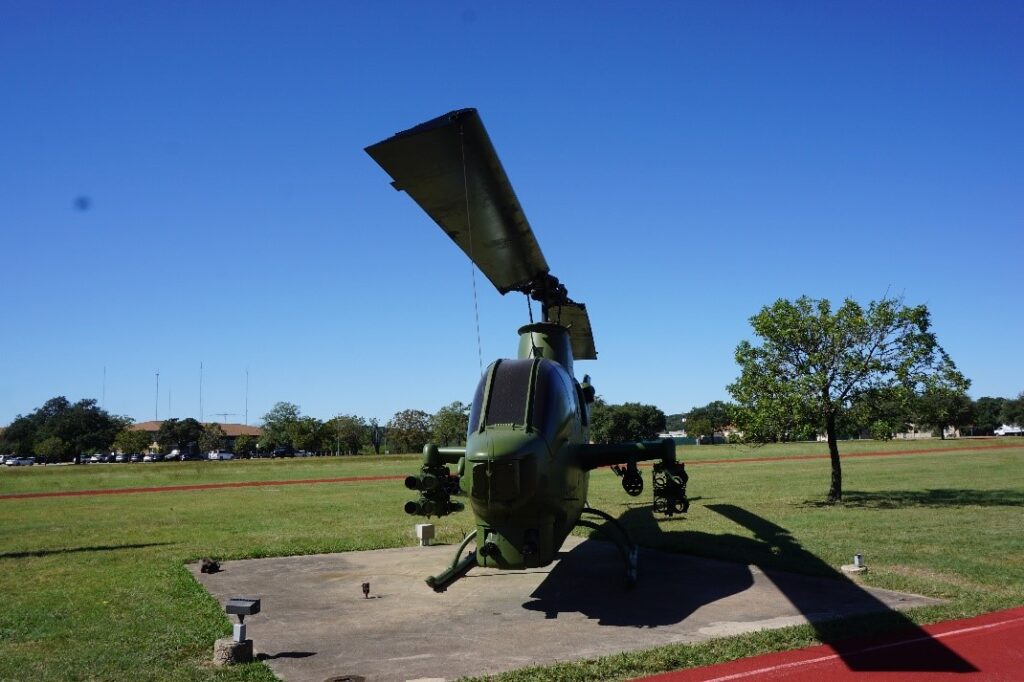
The Cobra helicopter on display at Camp Mabry in Austin, Texas has the serial number 68-15153. This aircraft is one of 290 converted in the late 1970s from the original AH-1G model to the AH-1S configuration. It served with Troop D, 124th Cavalry Regiment before retiring to the museum in 1995.
The 124th, stationed in Austin, was the Texas 49th Armored Division’s main reconnaissance unit. In that role it operated 12 Cobras in addition to scout helicopters and ground vehicles. The 49th also contained the 1st Battalion, 149th Aviation Regiment at Houston which operated 21 Cobras. Both of these units operated the AH-1 between 1985 and 1996.
The 49th was one of six Army National Guard divisions to have heightened priority for new equipment and, in the event of war, required to quickly deploy to Europe and reinforce the NATO forces stationed in Germany.
In Europe, AH-1 pilots faced a formidable array of short-range anti-aircraft weapons ranging from small man-portable missiles found in every battalion to the “Osa” vehicle-launched missile with a range of over 10 kilometers. But the most dangerous threat was the old fashioned gun in the form of the ZSU-23-4 “Shilka.” Mounted on a light tank chassis, this weapon boasted four 23 millimeter guns with a radar for automatic target tracking. The Shilka could respond faster than missiles to the appearance of a new target. Unlike infrared homing missiles of the time, it could shoot at a Cobra from any angle.
The primary mission was no longer support for counterinsurgency but rather the destruction of massed Soviet tank forces. To accomplish this and other missions, Cobra pilots had access to a variety of weaponry suited for a variety of targets and situations. The pilot, who is also the commander of the aircraft, sits in the rear cockpit. The co-pilot/gunner sits in front. Either one of them can fly the aircraft.

The M28 turret located in the chin position contains two M134 electrically-powered six-barrel rotary machine guns. The turret is modular and can also carry two M129 automatic grenade launchers or one of each weapon. Usually known as the “minigun,” the M134 could fire at either 2,000 or 4,000 rounds per minute. The grenade launcher could fire 400 rounds per minute. The gun turret could be aimed by the pilot with a fixed reflex sight, by either crewman using the M65 Telescopic Sight Unit (TSU), or by the gunner using a revolutionary helmet-mounted sight (HMS).
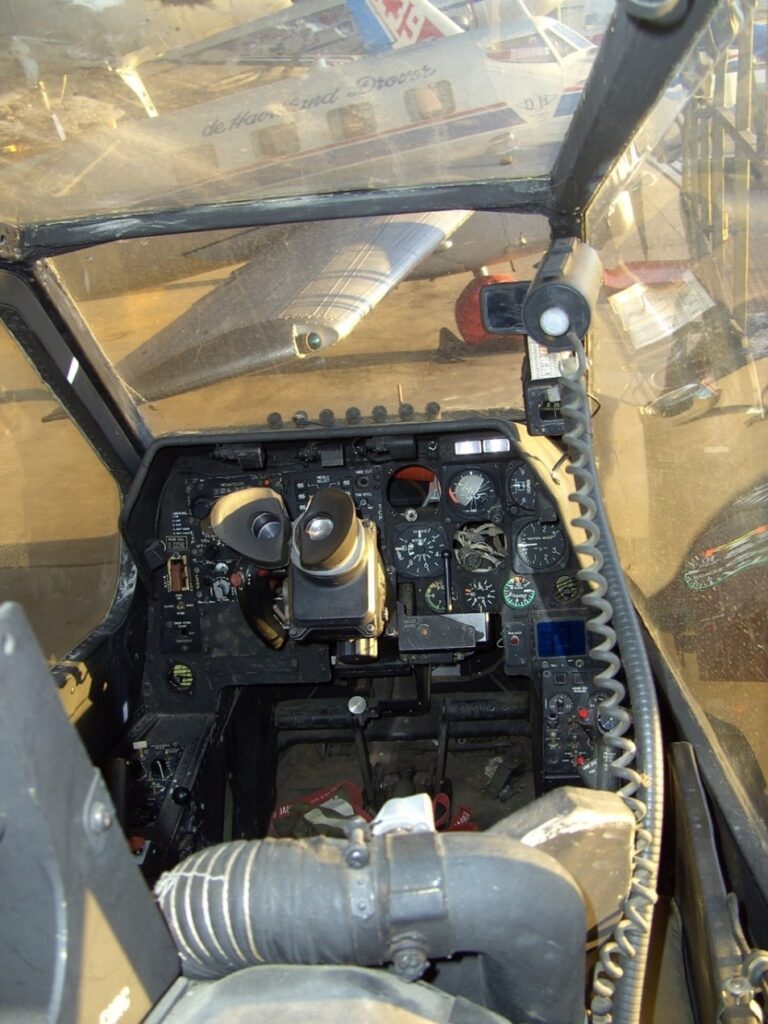
The HMS consisted of a headset with an eyepiece and a mechanical linkage which measured the direction in which the gunner’s head was pointed. The gun turret automatically turned so as to always point in the same direction. The eyepiece contained the crosshairs for aiming.
The minigun and grenade launcher were versatile weapons but their short effective range, only 1,000 meters for the Minigun, often made using them dangerous in combat since pilots had to bring their aircraft within the range of enemy rifles and machine guns. Other weapons were needed to reach further and destroy harder targets.
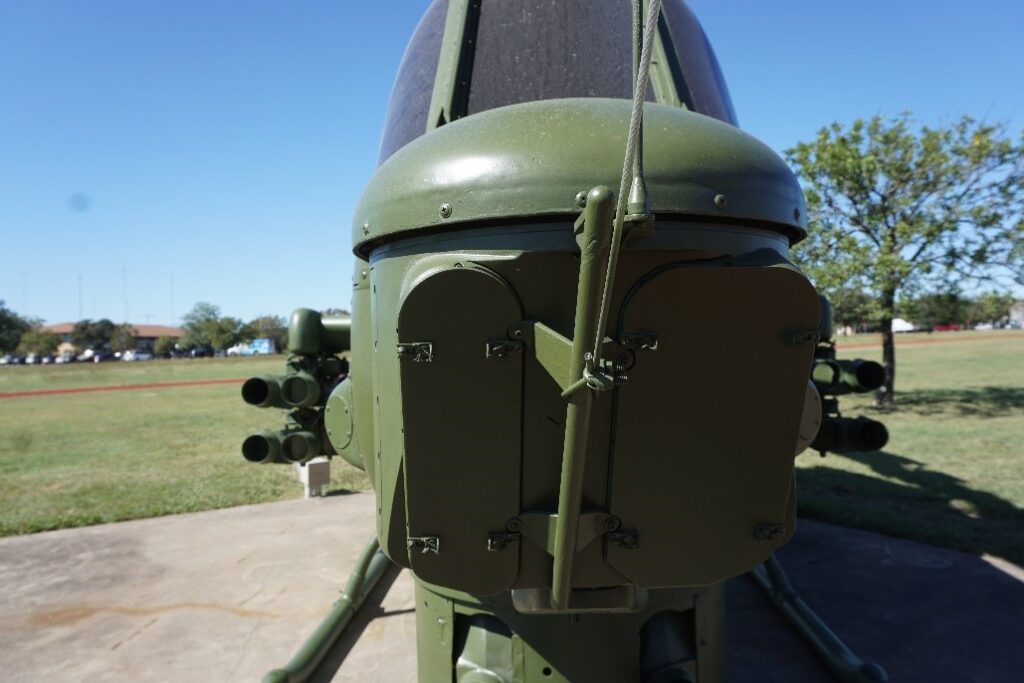
Above the turret, occupying the very nose of the aircraft, is the Telescopic Sight Unit. The TSU is the most important and most visible part of the upgrade from the original AH-1G. It is a sophisticated optical device offering the gunner a 2x or 13x magnification view of a target. The gunner points the TSU with a small joystick in the front cockpit. While the TSU could be used to aim the gun turret, its primarily role was to guide the BGM-71 TOW anti-tank missile. A quadruple missile launcher can be seen at the end of each wing.
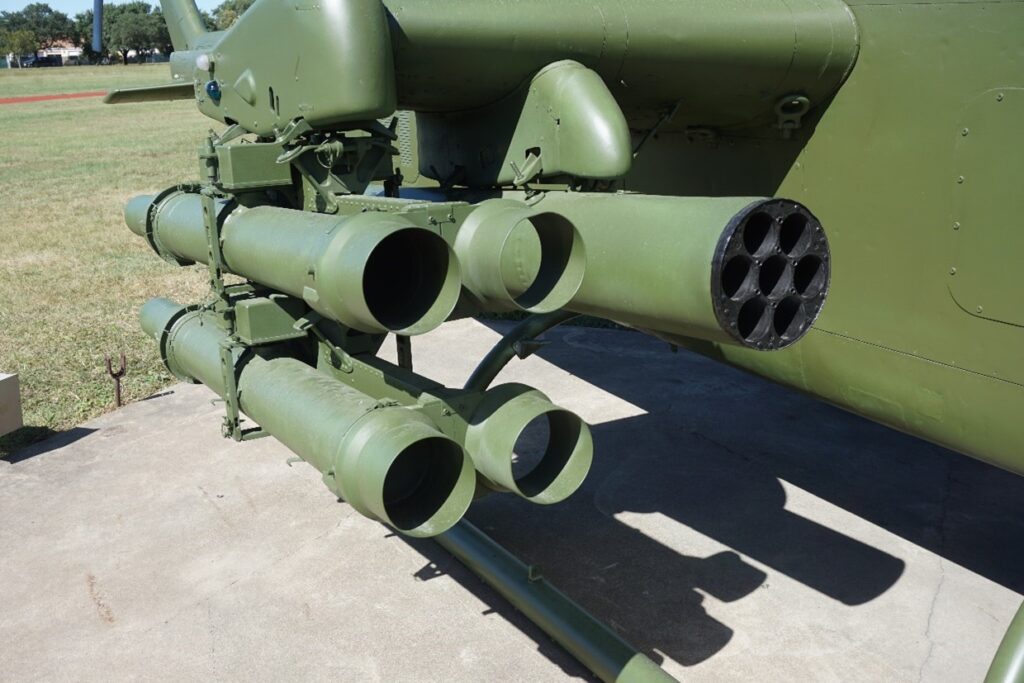
The TOW, which is short for “Tube-launched, Optically-tracked, Wire-guided,” is an example of a command-guided missile. This means the missile itself has no homing seeker, no brain of its own. It is entirely dependent on instructions from the launcher. In this case those instructions are passed through a pair of wires. Other missiles, such as the Russian “Kokon,” receive commands by radio.
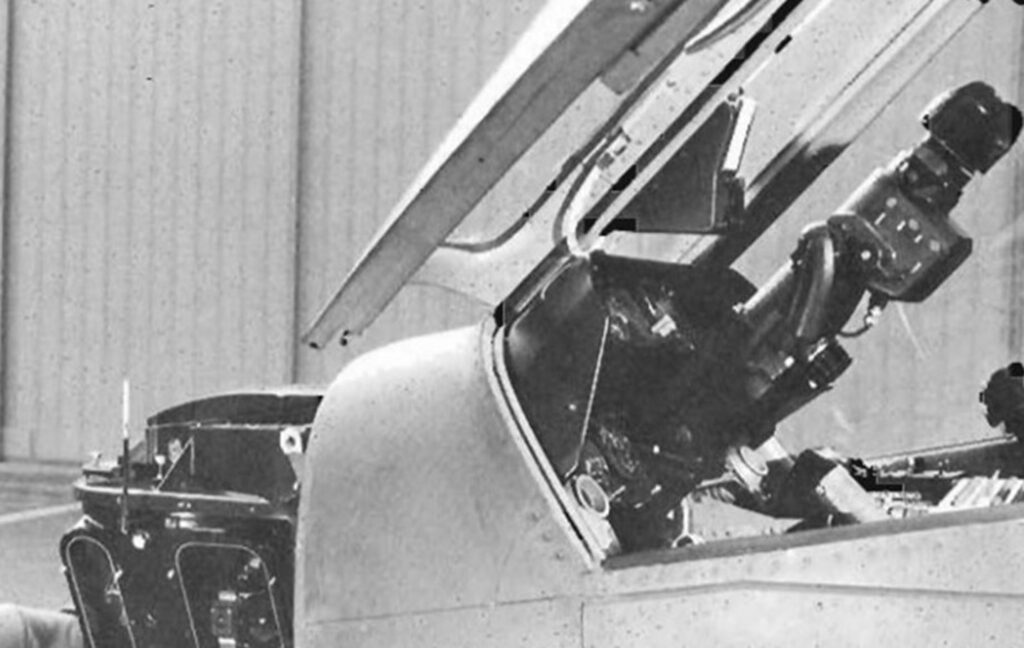
To fire a TOW, the gunner first aims the Telescopic Sight Unit so that the crosshairs are over the target. The pilot now has to steer the aircraft to within certain parameters. After the missile is fired, the electronics on the aircraft measure the difference between the direction the missile is flying and the direction to which the sight is pointed. To do this a sensor in the TSU tracks an infrared beacon located at the back of the missile. Whenever the missile is off course, steering directions are sent through the wires to correct it. As long as the pilot keeps his crosshairs on the target the missile should hit.
The TOW was first used in combat in Vietnam on May 2, 1972. The missiles were launched from modified UH-1B transport helicopters. Cobras from the 361st Assault Helicopter Company escorted the lumbering Hueys while they destroyed four tanks and an artillery piece.
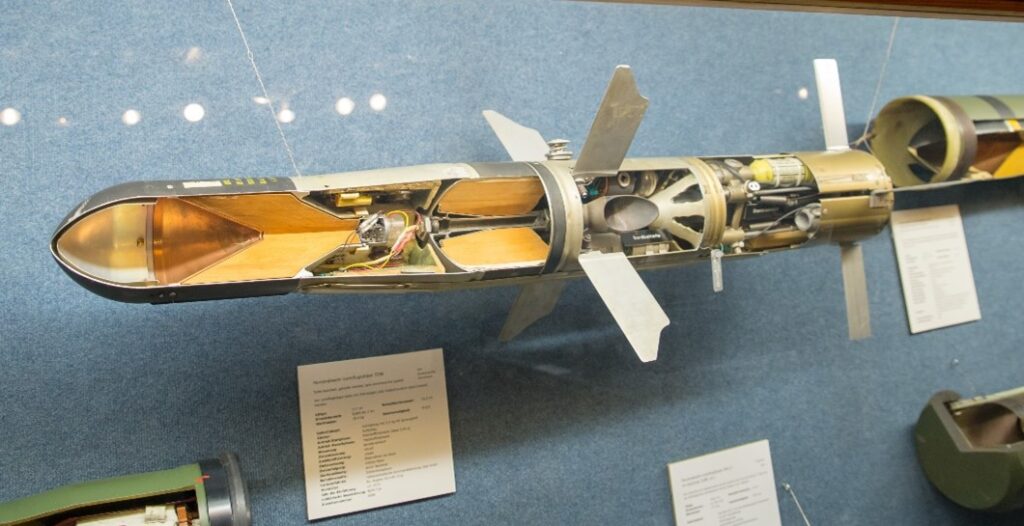
Wire guidance allows all the expensive electronics to be on the multi-use aircraft rather than the single-use missile. It also results in a system which is extremely difficult to jam. However, there are also some drawbacks. TOWs fired over salt water or power lines can short-circuit. The range of the missile is limited by the amount of wire that can be fit into the missile. The greatest drawback, as far as the aircrew’s survival is concerned, is the necessity to have the target in crosshairs for the entire flight time of up to 23 seconds.
The TOW was a late arrival to the Cobra’s arsenal. Moving to the inner wing pylons we can see the most powerful weapon available to the pilots fighting in Vietnam. The “Hydra” family of unguided rockets was derived from the Mark 4 air-to-air rockets used by Air Force interceptors such as the F-86D.
Our aircraft carries two rocket pods each carrying seven rockets. The Cobra could also be equipped with larger pods carrying nineteen rockets each. Rockets were fired by the pilot using his reflex sight. Like the Mark 4, the Hydra rockets spread out after launch, and therefore a salvo was required to ensure target destruction. While not precise, they were perfect for delivering the maximum amount of high explosive in the shortest amount of time over the widest possible area.
The Cobra continued to be upgraded throughout the Seventies and early Eighties. The AH-1S “Step Two” replaced the existing minigun/grenade launcher turret with a new model featuring the M197 cannon, a three-barrel rotary weapon which fired a 20 mm round. The new gun delivered not only greater firepower but greater range so that using the gun was less hazardous for the crew. The “Step Three” upgrade added a heads-up display, ballistics computer, and laser rangefinder.
Yet, by the 1980s, the Army Cobra was showing its age. The single engine restricted the payload that could be carried, especially in high-temperature conditions when the rotors could produce less lift. The Cobra lacked the range to be effective at interdiction missions behind the front lines, a task which was emphasized by the contemporary AirLand Battle doctrine. The Cobra also had little ability to fight at night. Only some of the newest AH-1s were equipped with a thermal imaging sight for the TOW missile.
The Cobra fought in the Gulf War (1991) alongside its replacement the AH-64 Apache. The last AH-1s in active duty service were withdrawn in 1999. Some National Guard battalions kept their Cobras for another two years with final retirement in 2001. Twin-engine Cobras continue to serve in the Marine Corps with the latest AH-1Z version currently in production.
The Cobra helicopter gunship at the Texas Military Forces Museum on Camp Mabry recently underwent a restoration project, and is now waiting to show its fangs again for visitors.
A Pioneering Aircraft: Bringing Brains and Brawn Together in the F-86 D

A Pioneering Aircraft:
Bringing Brains and Brawn Together in the F-86 D
By Christopher Paulos, MA
One of the less well known, but most pioneering in design of the aircraft preserved at Camp Mabry, in Austin, Texas, is the North American F-86D “Sabre Dog.” While the aircraft saw service for only a brief time and never entered combat, it represented a leap forward in the evolution of military aircraft.
The prototype first took to the air on December 22, 1949. By 1953, the aircraft was serving in interceptor squadrons of Air Defense Command.
On November 19, 1952, Captain James S. Nash broke the Fédération Aéronautique Internationale World Absolute Speed Record by flying 12 kilometers at an average speed of 1,124 kilometers per hour (698.5 mph). Another F-86 had set the previous record of 670.8 miles per hour.
So, what was behind this pioneering jet aircraft’s record-breaking speed? The General Electric J47-GE-17 turbojet engine used on the earliest Sabre Dogs could produce around 5,450 pounds-force of thrust. By the end of the production run, the improved -33 version was fitted to provide 5,550 pounds. The use of afterburner increased the thrust generated by about a third.
By way of contrast, the model used in the older F-86A aircraft generated only 5,000 pounds “dry” and lacked an afterburner. While the engine was powerful, it was also troublesome. Thirteen Sabre Dogs were lost to engine fires between September and December 1953.
Despite sharing its name with the Sabres that fought in Korea, the F-86D was essentially a new aircraft, sharing only about 25 percent of its components with the older models. It had been briefly given the designation, F-95, before being redesignated to make the expensive project an easier sell.
New designs of Soviet jet and turboprop bombers such as the Tupolev Tu-16 and Tu-95 would fly faster than the piston-powered bombers of World War II, so a burst of cannon fire aimed manually through an optical sight or primitive radar screen was no longer considered a viable method of attack. What was needed was a new approach to fighting these kinds of threats.

The sole armament of the Sabre Dog was the Mk 4 Folding Fin Aerial Rocket, often called the “Mighty Mouse” of which 24 were carried in a retractable tray. Each rocket was 1.2 meters long and 70 millimeters across. Upon launch, four fins folded out from the rear of the rocket to stabilize it in flight. This new weaponry was bold and pioneering in concept, but hitting a target at high-speed was still a challenge.
Prior to the Sabre Dog all U.S. Air Force fighters equipped with radar required a second crewman to operate the finicky equipment. The Sabre Dog dispensed with the radar operator by automation.
The key to this accomplishment was the Hughes E-4 Fire Control System. Previous systems required the pilot to fly a pursuit course, which would eventually place the fighter to the rear of the target bomber. This exposed the fighter to return fire from the bomber’s rear turret. The E-4 could compute a “lead collision” course whereby the pilot attacked the target from ahead and to the side.

The APG-36 radar could track a target up to thirty miles away. Once a target was locked on, symbols appeared on the radar screen to provide guidance to the pilot. A dot indicated the course calculated to bring the aircraft to the best position to fire on the target. A small circle appeared at the center of the screen. When the steering dot was at the center of the circle, the aircraft was on the correct course. An outer “time-to-go” circle indicated the time until firing, shrinking as the aircraft got closer to the calculated point of intercept.
While the pilot concentrated on the aircraft radar screen, he still needed to fly the plane. This was accomplished by using an artificial horizon provided along with the steering cues, another innovation over previous aircraft. With four seconds to go until firing, the pilot was prompted to arm the rockets.

The AN/APA-84 computer fired the rockets automatically at the precise moment calculated to have the best chance of a hit. The rockets could be fired in salvoes of 6, 12, or 24, which would, in theory allow the aircraft to down four bombers in a single mission. The rockets tended to spread out after firing so a larger salvo greatly increased the chance of destroying a bomber.
The F86 D at Camp Mabry bears the serial number 52-3770. It first served with the 63rd Fighter Interceptor Squadron (FIS) at Wurtsmith Air Force Base, then the 85th FIS at Scott AFB until July 1957. In November of that year it was assigned to the 181st FIS, one of three squadrons of the Texas National Guard to operate the type. This aircraft was retired from service in 1960.

Today, the Texas Military Forces Museum at Camp Mabry in Austin, Texas is home to a display of the F-86 D “Sabre Dog” welcoming visitors throughout the year.
References
Aeronautical Systems Division, Air Force Systems Command, 1961. Development Of Airborne Armament 1910-1961 Volume III: Fighter Fire Control.
Department of the Air Force, 1953. AN 01-60JLC-1 Flight Handbook USAF Series F-86D Aircraft.
Department of the Air Force, 1961. T.O. 1F-86L-1 Flight Handbook USAF Series F-86L Aircraft.
Goebel, G., 2017. [1.0] F-86A Through F-86D. [online] Airvectors.net. Available at: <http://www.airvectors.net/avf86_1.html#m7> [Accessed 11 June 2020].
Historical Division, Office of Information, HQ Air Defense Command, n.d. History Of Air Defense Weapons 1946-1962.
Mcchordairmuseum.org. n.d. Mcchord Air Museum – F-86 Sabre Dog (52-3669) From The 317Th FIS,325Th FW – Mcchord’s First Jet Aircrraft. [online] Available at: <https://www.mcchordairmuseum.org/REV%20B%20MAM%20COLLECTION%20F-86%20BORDER.htm> [Accessed 14 June 2020].
Wildenberg, T., 2008. A Visionary Ahead of His Time: Howard Hughes and the U.S. Air Force – Part III: The Falcon Missile and Airborne Fire Control. Air Power History, [online] 55(2). Available at: <https://www.jstor.org/stable/26274982> [Accessed 14 June 2020].
36th Infantry Division WWII Database
At the end of WWII the 36th Infantry Division compiled a roster of the names of the men who served with the Division during the war. These cards made their way to Camp Mabry, in Austin after the war and in the following years 1946-1950 other cards were added to include those men who had been part of the 36th Division (Texas National Guard) when it was brought into United States service in 1940.
The museum began adding scans and information from the over 50,000 cards to a database. This database is part of an interactive which our visitors can view when they visit the museum. The process is very time consuming and only about 26,000 cards have currently been added.
The searchable interactive is not available online yet, however you can search through the cards which have been entered so far in a basic way, but only by name or state at this time.
First got to https://36th-id.frb.io/ The page will look like the image below. You want to click on “View Infantry Table”
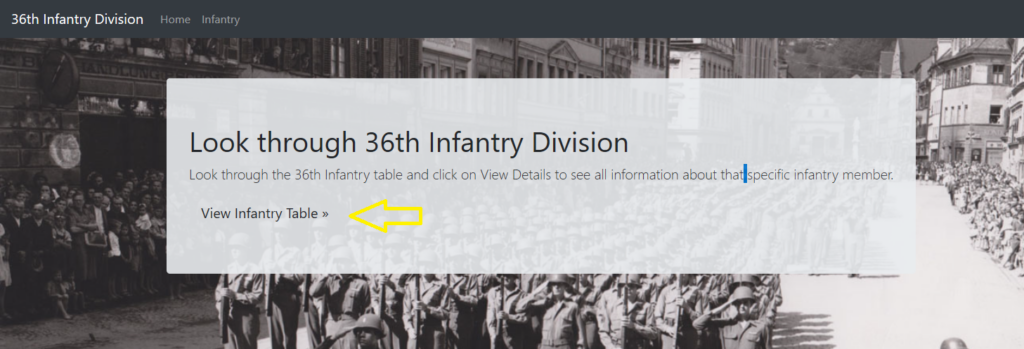
The names will be in alphabetical order, as mentioned there are currently over 26,000 entries, so you can sort by last name or state:
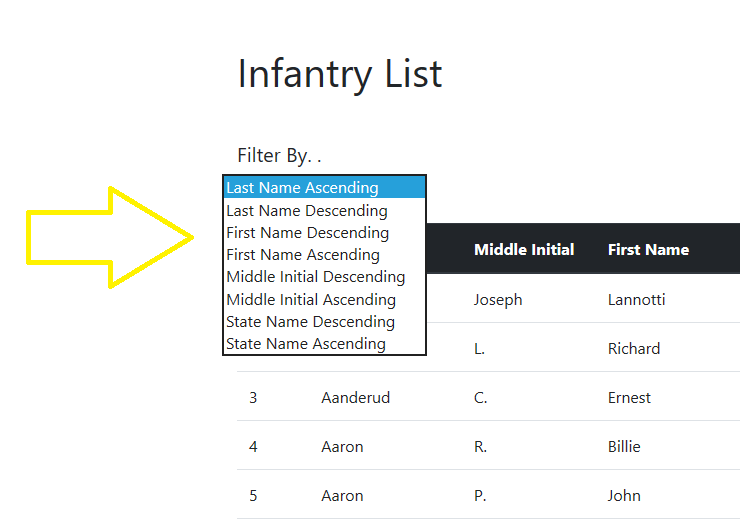
But the easiest thing to do would be to search by last name using the “find” feature on your computer [control f] or using your computer drop down menu. In the example below I’ve used the last name of English. It returned 14 possibilities.
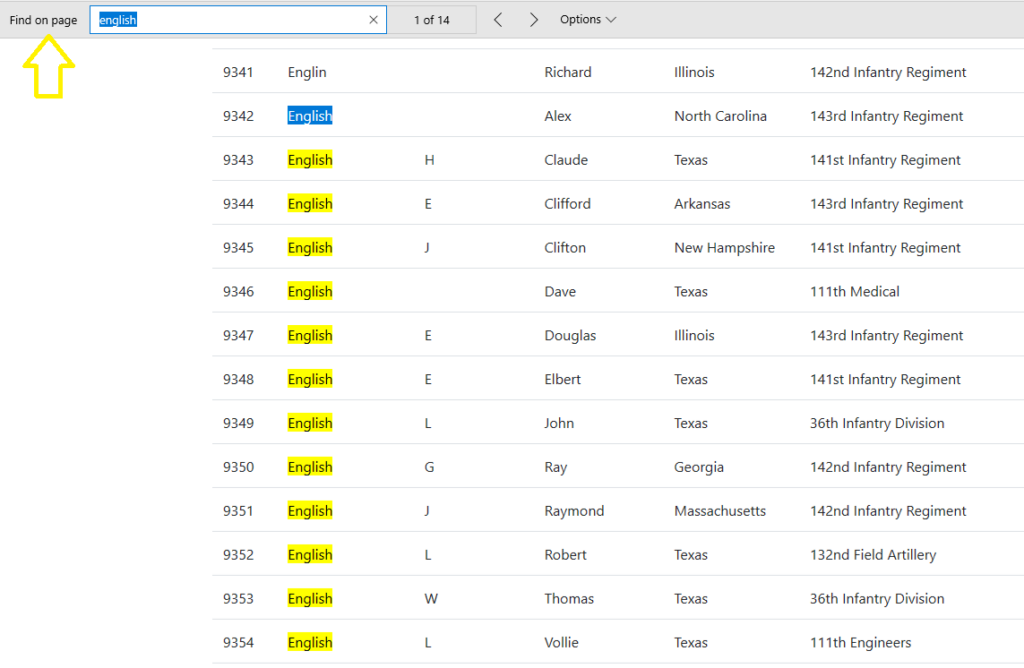
Once you’ve found a name you want to look at click on the “view details” on the far right side of the database list.
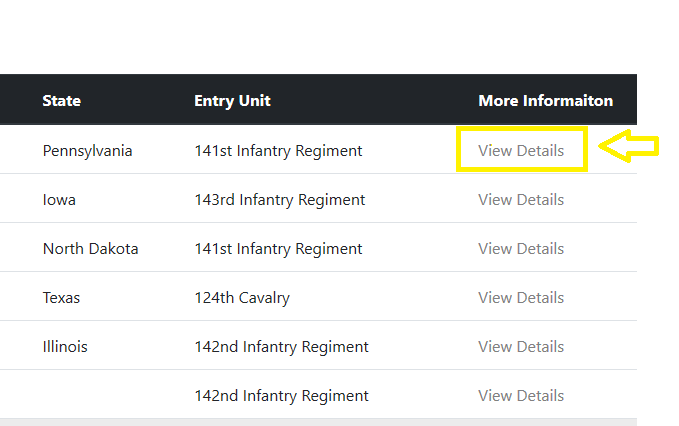
This will bring up the page for that specific soldier:
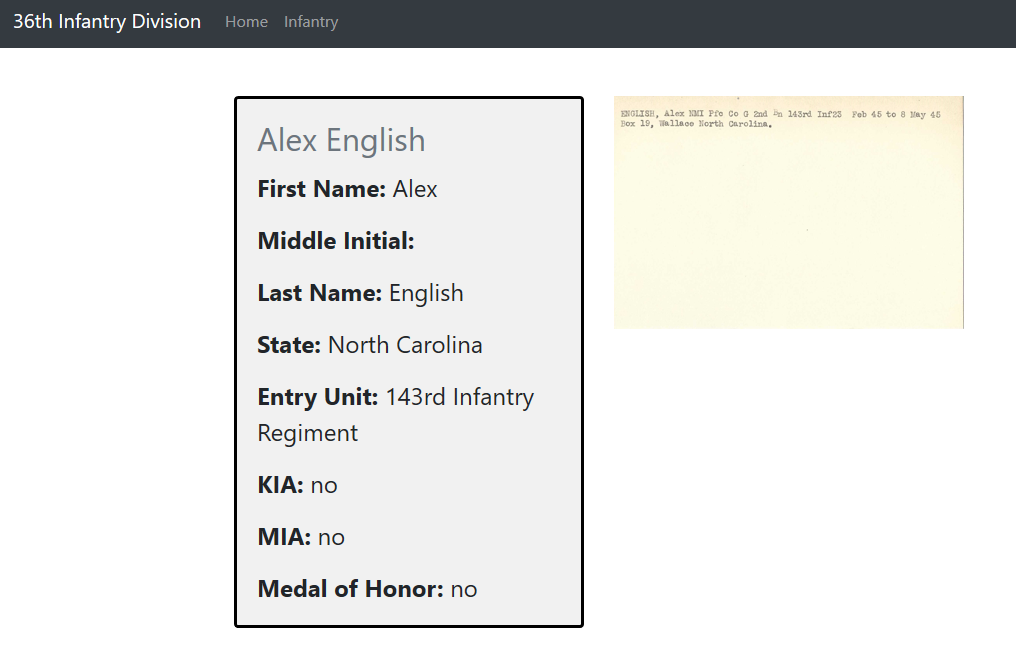
Then if you click on the file card, it will come up larger on a screen by itself:
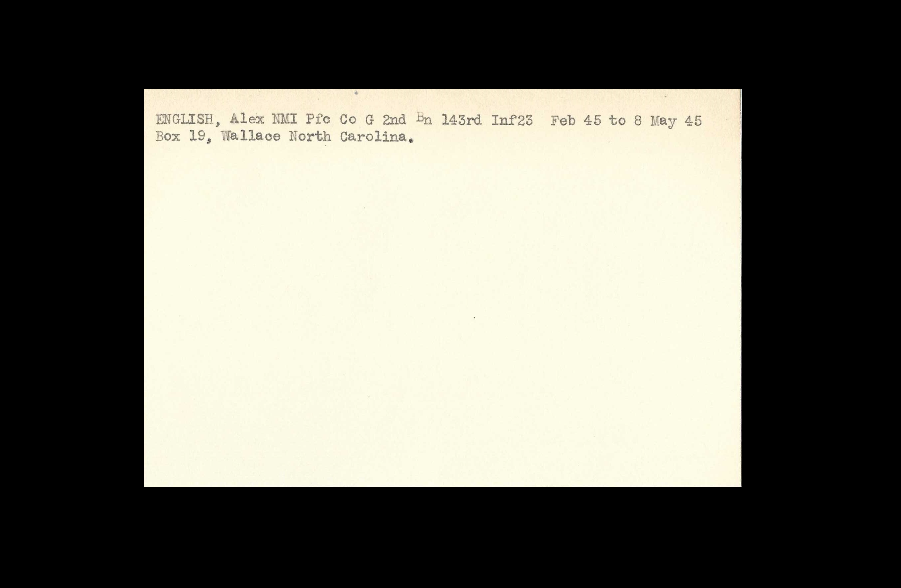
Currently all of last names beginning with A,B,C,D,E,F,G,I,L,W,X,Y,Z are done. This post will be updated as more letters are completed. If you have questions about the database, want to report a spelling error, or request more information please email us at [email protected]
